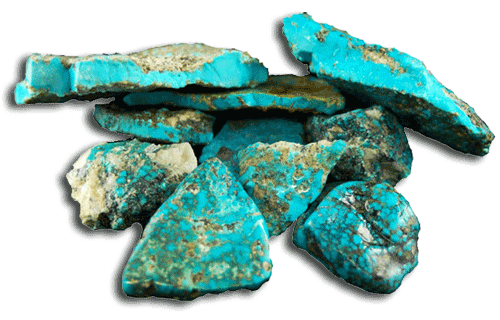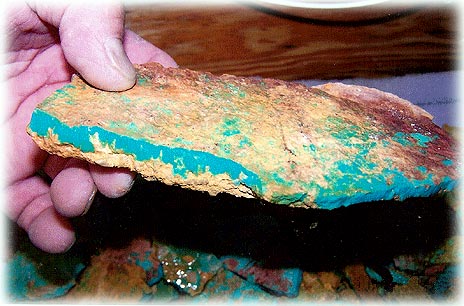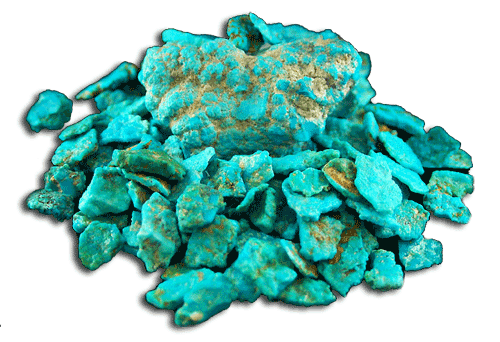 Loading... Please wait...
Loading... Please wait...- 970-759-1040 Text / Voice
- Gift Certificates
- My Account
Currency Displayed in
- Home
- Turquoise Learning Center
- Turquoise Information
Turquoise Information
- Genuine Turquoise
- Tortoise Turquoise
- Carico Lake Turquoise History
- Brown Turquoise
- Turquoise Chakras
- Blue Turquoise
- Blue Spiderweb Turquoise
- Lime Green Turquoise
- Turquoise History
- Arizona Turquoise
- Turquoise Grading and Qualities
- Turquoise Color Chart
- Turquoise Facts
- Turquoise Crisis
- Turquoise Properties
- Turquoise Gemstones - Sky Stone Gems
- Spiderweb Turquoise
- Real Turquoise
- Royston Turquoise Gemstones
- Fake Turquoise
- Gem Turquoise
- Quality Turquoise
- Rare Turquoise
- Organic Turquoise
- Books about Turquoise
- Green Spiderweb Turquoise
- Natural Turquoise
- Natural American Turquoise
- Turquoise Value
- USGS History of Turquoise
- Turquoise Stones
Categories
Turquoise Information
Turquoise Information
Turquoise Information

Below you find a summary of the facts and Turquoise Information you need know to buy a wonderful piece of Turquoise Jewelry , Rough Turquoise or collectable Turquoise Cabochon. We hope that this Turquoise Information resource will assist you in your search for that perfect Turquoise collectible, adornment or investment. We feel we have been in all aspects of the gemstone and jewelry business, especially in the Turquoise business, long enough to give you some great advice about buying and investing in Turquoise and Turquoise Jewelry. We have summarized different information you will need to know related to Turquoise in order to be an educated buyer. As Turquoise is a very complex stone, with many variables that determine the value and collectability, many more than other gems, you need have a lot of Turquoise Information to make educated purchases.
Basic Turquoise Information
Here is some quick Turquoise Facts. One of the most important pieces of Turquoise Information is that this gem is one of the most popular gemstones in the world market and is considered by most jewelers and gem experts to be in the top ten most popular gems world wide. Turquoise is a gemstone with great diversity as jewelers add it to necklaces, bracelets, rings, and earrings. The stone is also a popular material for art pieces, trade, and religion. Another benefit to a Turquoise purchase is that the stone’s color allows jewelers to use a variety of materials for the settings. For instance, the stone pairs well with yellow gold, white gold, and platinum along with stainless steel and silver. Sterling Silver is the most popular medium you will find the "sky stone" set in. Turquoise is the birthstone for December and recommended for a couple’s fifth wedding anniversary. With the gem in high demand, buyers must carefully assess a stone for quality. When shopping for Turquoise, review each stone’s signature color and surrounding matrix if you are looking for a collectible, or you are paying extra for the gem. Standard Turquoise ranges from 2.00 per carat to 150.00 per carat for natural gems that have not been stabilized or color enhanced. Stabilized Turquoise gemstones will sell for 1 dollar to 8 dollars per carat depending on color and matrix patterning. Turquoise will vary in color from deep green to light blue while the surrounding hues may feature white or black. There are also rare colors of Turquoise such as lime green Turquoise, yellow, and brown Turquoise. Some gems may not feature varying colors within the stone. There are also many cousins in the phosphate gemstone family such as Variscite, Chalcociderite, and Faustite that are commonly sold as Turquoise and have been for thousands of years. Keep in mind that surrounding color does not cause the value of the gem to decrease. Therefore, individuals should decide whether they like more or less color variation in their Turquoise Jewelry or stones, whether they like "Matrix" or host rock in the gem or not, and if they desire a standard grade of Turquoise, a rare hue, or an ultra rare variety of Turquoise such as Spiderweb Turquoise or Turquoise from a rare local or closed mine. - Learn More at our Turquoise Learning Center
Some Physical Turquoise Information
The Forming Process of Turquoise
When nature creates Turquoise, the process takes over millions of years to complete. A chemical reaction occurs when water seeps through rocks that feature added minerals like aluminum and copper. Furthermore, the mineral percentage will cause the gem’s resulting shade. Turquoise is a hydrated phosphate of aluminum and copper (copper aluminum phosphate) or CuAl6((OH)2/PO4)4 CuAl6(PO4)4(OH)8 + 4H2O. In the language of chemists and geologists, turquoise is known as. Turquoise stones can contain impurities that form veins of sandstone, limonite, psilomelane or jasper. At temperatures of 500 degrees, blue Turquoise stones will become greener. Below are more Turquoise properties. - See more at: http://www.durangosilver.com/pyhsicalpropsturq.htm and Turquoise Properties
About Blue Turquoise
Nature makes blue Turquoise when an abundance of copper is present in the rock but iron has a very small presence. The mineral make up of the Turquoise will have less aluminum. Consumers will find a variety of blue hues when they begin shopping for Turquoise. The stone is available in light sky blue, numerous mid-range blue shades, and deep ocean blue. In addition, shoppers may purchase the gemstone in diverse blue-green combinations. It seems that blue Turquoise is more prevalent in certain locals and even certain mines such as in Arizona Turquoise mines.
Green Turquoise
This variety of Turquoise is formed when the solution has more aluminum than copper. Shoppers can purchase Green Turquoise Jewelry in shades like bright green, ocean green, lime green and tree green. With the addition of a green Turquoise item, jewelry owners will have a unique piece to add interest to their jewelry collection.

Turquoise Varieties
There are many varieties or looks of Turquoise. A collector can choose from green, blue, brown, yellow, matrix free, spiderweb, two tone, dendrite, and free form matrix, as well as different combinations of color and matrix colors. The most rare varieties of natural Turquoise are spiderweb Turquoise, dendrite Turquoise, birdseye or water web Turquoise, lime green turquoise, and pure sky blue.
High Grade Turquoise
Turquoise comes in all different grades from C to AAA grades. Grades B - AAA are considered gem grade Turquoise and can be used in Turquoise without being stabilized. C grade and "Chaulk Turquoise" usually has to be stabilized to be used as gemstones in Turquoise Jewelry. Learn more about Quality Turquoise
Turquoise Mine Information - Click Here!
Turquoise Treatment Information:
Not all Turquoise can be gem grade natural, infact most of the Turquoise from the larger mines is mid to low grade. Much of it is "Chalk Turquoise" meaning the stone has not had enough time to formed correctly and to be hard and of good color. This material can be good gem grade material if it is treated. When Turquoise producers complete treatments on the gemstone, they may stabilize, dye, reconstitute, and back the gem. They may also wax and oil the stone.
Stabilization:
To stabilize Turquoise, artisans will treat it with a resin which can be water based or oil based. Once the gemstone is stabilized, owners will have a product with greater durability though the value is less than high grade natural, although on today's market there are also different grades of Stabilized Turquoise, some rivaling natural Turquoise in price.
Dye:
When artisans dye turquoise, they add colors such as blue to the gem during stabilization. With the inclusion of dye, the stone’s color is enhanced as the hue will appear uniform or more intense.
Reconstitution:
If Turquoise is reconstituted, then an artisan has gathered a large amount of the stone’s fragments, which are too small to be used in a setting on their own. Artisans will then powder the particles and bond them to create one large stone. In some cases, a jewelry piece featuring reconstituted Turquoise will also include fake materials. Therefore, buyers should use caution when purchasing reconstituted products.
Wax and Oil Treatment:
In the past, artisans would wax and oil turquoise, which produced a wet result. After the treatment was finished, the stone’s color would appear bright and intense. When artisans decide to complete a Turquoise treatment involving wax and oil, they typically use high quality gemstones. Keep in mind that a treated stone may sweat when it is exposed to a slight amount of heat or sun, which may cause Turquoise to develop an unattractive white film on its surface.
Backing:
Often, quality turquoise is discovered in thin veins. With thin gemstones, artisans may glue it to a stronger stone to increase its durability or back it with a lightweight resin. Experts call the process backing. Furthermore, the method allows buyers to acquire higher quality gemstones. Keep in mind that backed Turquoise does not lose its value, often backed Turquoise is more valuable as it is higher grade material. Almost all American stone cutters back Turquoise to show it was cut in America, as well as let the stone sit higher in the bezel. Most Southwestern artists look for backed stones so that they know they are hand cut in the USA.
Turquoise Information - Buying
Turquoise Buying Tips
When shopping for turquoise, be sure to review the stone’s color for vividness and uniformity. After a company procures turquoise, they typically treat the gem to enhance the stone’s attributes. In some cases, treatment will include dye, which will change a pale-colored stone into one with bright colors. Low quality gems usually receive a dye treatment, and since turquoise is porous, it will accept chemically based color additives. If gem shoppers notice that a stone appears translucent, then it may be color treated and is a low quality gem. If a buyer purchases a dyed stone, then he or she should ensure proper care to prevent the turquoise from fading or discoloring. Global turquoise reserves appear to be decreasing while the demand for the gem is growing. Therefore, purchasing a piece of jewelry with a quality stone may be a smart financial investment.
Turquoise Cuts
Turquoise is not transparent. Therefore, jewelry cutters typically do not facet the stone. Instead, artisans cut Turquoise cabochons or Turquoise beads. In fact, the cabochon cut is the oldest and most basic way that jewelers cut gems. Buyers will also find Turquoise in carved shapes like pear, flower,heart, and more intricate shapes.
How to Care for Turquoise
Since turquoise is a phosphate mineral, it is fragile. Therefore, gemstone owners should use caution when wearing perfume on their neck and wrists while adorning themselves with a turquoise bracelet or necklace. Chemicals will damage the stone’s finish and may change its color. Skin oils may also negatively affect turquoise. Avoid cleaning the gem with commercial jewelry cleaning products and prevent the stone from entering direct sunlight because it can cause turquoise to discolor. Before putting on a jewelry item featuring turquoise, apply makeup and sunscreen in addition to hairspray. After wearing turquoise, gently wipe the stone with a soft, clean towel, which will prevent residue from developing. It is safe to wash the gem with warm water. However, be sure to dry it thoroughly before placing it inside a storage container. Store turquoise in a separate compartment away from other jewelry pieces or gems as turquoise may become scratched. Also, do not store the gemstone in an airtight container since this can also cause damage to the stone.

Back to the top | Turquoise Learning Center | Learning Center












